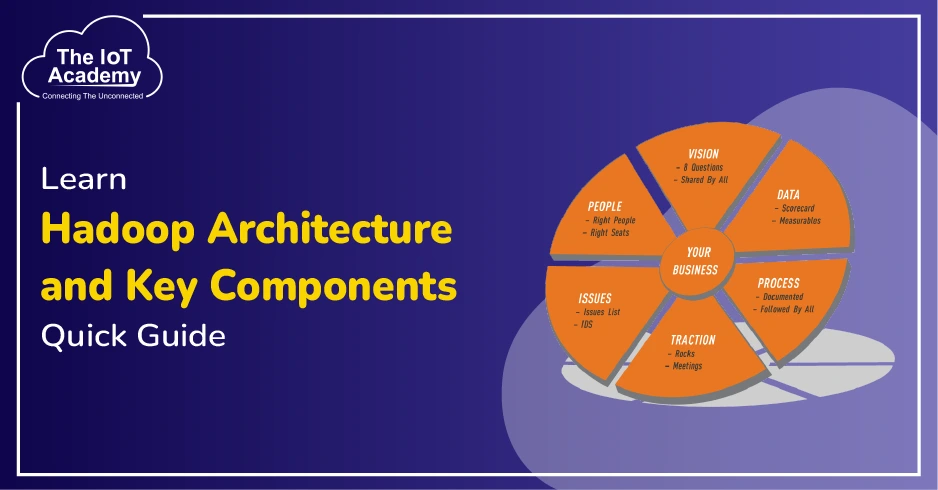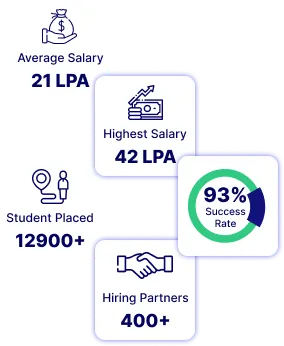Cloud computing is an effective technology, with many enterprises now using cloud architecture to develop networks that empower their employees. Cloud architecture enables an enterprise to build its cloud computing network that can benefit enterprise employees and outer users such as customers and clients. Information about cloud architecture can help you make an informed decision about whether it would be beneficial to use within your organization.
In this blog, we will learn about Cloud Computing architecture and how it works. Before diving directly into the architecture of cloud computing, let's first clarify what cloud computing is.
What is Cloud Computing?
Cloud computing refers to the storage, databases, software, analytics, and other platforms available over the Internet. It is any service that can be provided without being physically near the hardware. For example, Netflix utilizes cloud computing for its video streaming services. Another example is G Suite, which operates entirely on the Google cloud.
Simply put, Cloud Computing refers to the provision of on-demand resources (such as a server, database, software, etc.) over the Internet. It also provides the ability to create, design, and manage applications on a cloud platform.
What is Cloud Computing Architecture?
Cloud computing architecture is a combination of three components required for a cloud computing service. It consists of three basic components of cloud computing, the front end, the back end, and cloud delivery. The front end contains the client part of the cloud computing system. It includes the interfaces and applications needed to access Cloud computing or cloud programming platforms. While the back-end refers to the cloud, it includes the resources required for cloud computing services. It consists of virtual machines, servers, data stores, security mechanisms, etc. It is under the control of the provider.
Cloud Architecture in Cloud Computing
Cloud computing distributes a file system that spreads across multiple hard drives and computers. It is a robust distributed environment that relies heavily on solid algorithms. Data is never stored in one place; if one unit fails, the other automatically takes over. User disk space is allocated in a distributed file system, while the resource allocation algorithm is another critical component.
What is Front-End Cloud Application Architecture?
A business cloud computing platform's front-end infrastructure is essentially everything the end user interacts with. It is a broader assimilation of various sub-components that offer a user interface. This determines how the end user connects to cloud computing as a whole. Let's understand the main components of the front end.
- User Interface: The user interface is the familiar, everyday interface you come across daily. The cloud creates a seamless environment where end users can complete tasks without opening the software on their local computers. For example, you are communicating with your smartphone, desktop, or tablet it all depends on the interface working correctly. Popular interaction interfaces include Google Docs, Gmail, and Evernote.
- Software: Front-end software architecture is what runs on the user side. Frontend software architecture consists of client-side applications or browsers responsible for presenting data to users.
- Client Device or Network: The end-user hardware is called a client-side device. As a vital part of the frontend architecture, it can be any input device such as a mouse, keyboard, or sound card. In cloud computing, the client-side device does not require an extraordinary capacity to handle heavy workloads. Your cloud will take care of the work and process the same.
What is Back-End Cloud Application Architecture?
The back-end cloud computing architecture in the cloud delegates the front-end architecture. It consists of hardware and storage that resides on a remote server. The cloud service provider handles and manages this backend architecture. The core components of a robust backend cloud architecture are:
- Application: An essential part of the application architecture is the client's user interface. It offers backend services to access client data. This layer deals with their demands and requirements.
- Service: Backend cloud computing is a magical area of development that adds utility to any cloud hosting system. The service enables the execution of every task running in the cloud. Some popular services are application administration and programming, storage, and web services, each of which enables the rapid and efficient execution of various tasks in the cloud runtime.
- Cloud Runtime: Cloud Runtime is a buzzword that refers to the concept of readily available services. It's like a cloud operating system that uses technologies like virtualization to allow people to access countless network servers at any time.
- Storage: Cloud storage is where data is stored in a cloud application. A dedicated part of the cloud is commonly used for this purpose. Examples include SSD (Solid State Drive), Hard Disk Drives (HDD), Intel Optane DC Persistent Memory, and more! Hard drives in server bays make up the majority of storage in a system, with SSD storage or flash devices forming up a small chunk.
- Infrastructure and Architecture: Infrastructure is the engine that drives all cloud software services. It is a broad term and covers various technologies such as CPU, motherboard, graphics processing unit (GPU), network cards, accelerator cards, etc. The infrastructure model depends on the workload of your customers.
- Management: Management software is the "middleware" for a cloud computing system. It ensures that if tasks are related to different queues in your business, this kind of software allocates different resources to each job and ensures that each task gets its share of attention.
- Security: It is an integral and critical component. The security structure in the architecture is designed to keep one thing in mind - you must monitor the debugging processes. Bugs are resolved daily, even hourly. Regular system backups are necessary because what's the point of anything if things can't be restored when needed? Even the cloud is not immune to virtual threats, so firewall software comes into play to keep the security infrastructure functioning.
What is Cloud Delivery?
Simply put, a cloud solution is anything that can be accessed through a web browser from any internet-capable device (software, infrastructure, and platforms. Tech giants combine several products and deliver them to clients easily and quickly). To apply the format using the following methods:
- Software as a Service (SaaS) Model: It is a software distribution model in which developers put their applications into a cloud-based delivery system. Customers access these applications over the Internet, usually through a browser. Since no additional IT infrastructure is required on the customer side, SaaS subscriptions can be highly cost-effective. Additionally, it helps increase internal efficiency by enabling teams to work worldwide as and when needed. Some examples are Google Workspace, Dropbox, Salesforce, and more.
- Platform as a Service (PaaS) Model: This model is often run by organizations where users can build and operate applications in the cloud and effectively preserve them themselves. In the PaaS model, a third-party organization will present technical resources such as hosting facilities or programming tools. Some examples are Google App Engine, Apache Stratos, Heroku, and Force.com.
- Infrastructure as a Service (IaaS) Model: It provides the infrastructure required for companies to run their operations. It includes virtual and non-virtual servers, storage, and data center space in one place. IaaS also offers cloud computing, a form of utility computing where a service provider provides access to distributed systems and resources. Some examples are Linode, Rackspace, Amazon Web Services (AWS), Google Compute Engine (GCE), and others.
Why is Cloud Architecture Important?
Cloud computing architecture can provide a business or agency with many benefits, including:
- Reduction of physical computing space: On-premises data servers can take up a significant amount of physical space on your company premises. However, cloud computing allows a company to move resources to an off-site property or a cloud service provider's facility.
- Enhanced collaboration within and outside your institution: It is easy for employees, departments, and third-party vendors to share data securely.
- Easier Remote Access: Using a cloud network for your company allows employees to access files when they are out of the office. This can be very beneficial, especially for employees in remote positions or those traveling for work, as it provides constant access to all the necessary files without physically transporting them.
- Improved scalability: Many organizations use external companies to deliver their cloud computing architecture. This can significantly reduce the cost of increasing or decreasing the number of resources available within the cloud infrastructure by increasing or decreasing the terms of the contractual arrangement.
- Minimize IT operational costs: Cloud solutions for a company's file management needs are often cheaper than maintaining on-premises network solutions. This can happen through cost-effective contracts and by reducing operational costs such as physical media and lost productivity when transferring files.
- Data backup: Many cloud architecture systems include automatic file backup, either by storing the data on a separate cloud server or by maintaining copies in both the cloud and local storage on the user's device. This reduces the company's exposure to potential data loss because there are multiple copies of the underlying files that the company can access if one instance is damaged.
Conclusion
Understanding the intricacies of cloud computing architecture reveals a dynamic ecosystem of interconnected components. From scalable infrastructure to enhanced flexibility, the benefits are vast. Embracing this technology empowers organizations to stay competitive, innovate rapidly, and adapt to evolving digital landscapes








